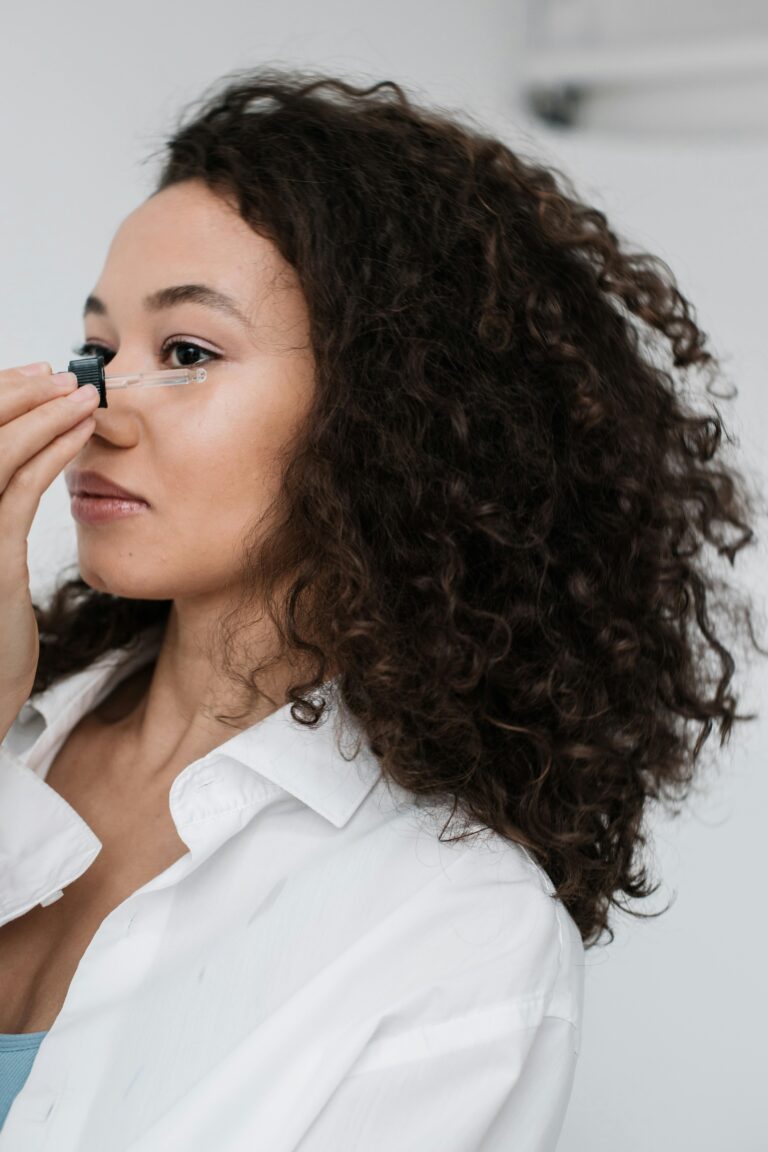What To Do About Hyperpigmentation: Best Tips and Treatments
Have you ever caught a glimpse of your reflection and wondered where those stubborn dark spots came from? Whether it’s from too much sun, a pesky breakout, or just life doing its thing, hyperpigmentation can feel like it popped up overnight and refuses to leave. You’re not alone if you’ve tried countless products or home remedies, only to feel like nothing’s really working.
The good news? You don’t have to settle for uneven skin tone or hide behind layers of makeup. Understanding what causes hyperpigmentation and how to treat it can make all the difference. From simple skincare tweaks to powerhouse ingredients, there are ways to reclaim that glowing, even complexion you’ve been dreaming of.
Understanding Hyperpigmentation
Hyperpigmentation happens when patches of your skin become darker than the rest, often leaving you feeling frustrated and wishing for an even glow. Knowing what causes it and the different types can help you move closer to clearer, balanced skin.
Causes Of Hyperpigmentation
- Sun Exposure: Spending time in the sun without protection triggers your skin to produce more melanin (the pigment that gives your skin its color) as a way to shield itself. Over time, this leads to sunspots or uneven patches.
- Post-Inflammatory Hyperpigmentation (PIH): If you’ve dealt with acne, bug bites, or any inflammation, your skin might have left behind dark marks as it healed. These marks are common and can take a while to fade.
- Hormonal Changes: Conditions like melasma can occur if your hormones fluctuate, such as during pregnancy or while taking birth control. These changes can stimulate excess melanin production, especially on your cheeks, forehead, or upper lip.
- Aging: As you get older, your skin’s natural cell turnover slows down, causing discoloration or age spots to become more noticeable.
Types Of Hyperpigmentation
- Melasma: This type tends to appear as symmetrical brown or grayish patches on areas exposed to sunlight, often influenced by hormone changes.
- Sunspots: Also called solar lentigines, these are smaller patches caused by prolonged sun exposure. They commonly show up on the face, hands, or arms.
- Post-Inflammatory Hyperpigmentation: If your skin undergoes trauma like acne or injury, darker marks might appear where the irritation occurred.
- Freckles: Freckles can darken with sun exposure and, while harmless, they’re grouped under hyperpigmentation due to their darker tone compared to surrounding skin.
Understanding these factors makes it easier to choose the right skincare products or habits to address your skin concerns confidently.
Prevention Tips
Hyperpigmentation can often be avoided or minimized by practicing consistent and thoughtful skincare habits. Here’s how you can protect your skin and keep it glowing!
Sun Protection And SPF
Daily sun protection is your best defense against hyperpigmentation. UV rays worsen dark spots, even if you’re indoors or it’s cloudy. Use a broad-spectrum sunscreen with at least SPF 30 every morning, and reapply every two hours if you’re outside. Don’t skip often-missed spots like your neck, ears, and hands—yes, those areas need love too! If you wear makeup, try a setting spray or powder with SPF for touch-ups.
Adding physical barriers to your routine can also help. Wide-brimmed hats, sunglasses, and UPF-rated clothing provide extra protection from UV damage. Combining sunscreen with these can further reduce risks of discoloration.
Avoiding Skin Trauma
Skin trauma, like picking at pimples or overly aggressive exfoliation, can trigger post-inflammatory hyperpigmentation (PIH). It’s tempting to pop that zit, but leaving it alone prevents scarring and dark marks. Be gentle with your skin, especially if you’re dealing with acne or sensitive areas.
Choose mild exfoliants, like a chemical exfoliant with AHAs or BHAs, instead of harsh scrubs. Over-exfoliating can compromise your skin barrier, making it easier for dark spots to form. If shaving causes irritation, switch to a more soothing shaving cream or consider alternatives like waxing or laser hair removal.
Consistency and care make all the difference in preventing hyperpigmentation from taking hold in the first place.
Treatment Options
Dealing with hyperpigmentation can feel overwhelming, but the good news is there are plenty of options to help reduce dark spots and even out your skin tone. From skincare products to professional treatments, there’s something for every skin type and preference.
Topical Treatments
Topical treatments are a great place to start. These products work directly on your skin and can be easily added to your routine.
- Vitamin C: A brightening superstar, vitamin C helps fade dark spots and protect your skin from free radicals. Look for serums with ascorbic acid for the best results.
- Niacinamide: This multitasking ingredient not only fades discoloration but also calms redness and improves your skin barrier.
- Retinol: A must-have for many, retinol speeds up cell turnover, helping to fade stubborn pigmentation while boosting collagen production.
- Hydroquinone: Considered a gold standard, hydroquinone lightens dark spots by targeting melanin production. It’s powerful, so consult a dermatologist if you’re unsure how to use it.
- Acids: Exfoliating acids like glycolic acid, lactic acid, and salicylic acid can help by removing dead skin cells and promoting a brighter complexion.
Consistency is key. Give these products time to work, and always pair them with sunscreen to protect your progress.
Professional Procedures
Sometimes skincare products aren’t enough for deeper pigmentation, and that’s where professional procedures come in.
- Chemical Peels: These treatments use acids to exfoliate and remove layers of damaged skin. Peels can range from mild to intense, depending on your skin’s needs.
- Laser Therapy: Treatments like IPL (Intense Pulsed Light) or fractional lasers target specific areas of discoloration, breaking up excess pigment without harming the surrounding skin.
- Microneedling: By creating tiny micro-injuries, this procedure promotes collagen production and can improve the appearance of dark spots.
- Microdermabrasion: A gentle treatment that exfoliates the outer skin layers to reveal brighter, clearer skin underneath.
Always consult a licensed professional to find the treatment that fits your skin’s unique needs and sensitivities.
Natural Remedies
If you prefer simpler, natural solutions, there are a few options to try. While they may take longer to show results, they can still be effective when used consistently.
- Aloe Vera: Known for its soothing properties, aloe vera may also help lighten dark spots over time.
- Turmeric: This bright yellow spice has anti-inflammatory and antioxidant benefits that may reduce pigmentation. DIY face masks with turmeric and yogurt or honey are popular.
- Green Tea Extract: Packed with antioxidants, green tea can calm inflammation and may help with discoloration.
- Licorice Extract: Often found in serums and creams, it’s a natural brightening agent that can fade dark spots gently.
Be patient with natural remedies and don’t skip sunscreen—UV exposure can reverse any progress.
Lifestyle Changes For Better Skin
When dealing with hyperpigmentation, making small changes to your lifestyle can have a big impact on your skin. By focusing on your diet, ensuring proper hydration, and sticking to a consistent skincare routine, you can support your skin’s health and natural glow.
Diet And Hydration
What you eat and drink plays a big role in your skin’s appearance. A healthy, balanced diet rich in nutrients can help reduce the chances of pigmentation from worsening.
- Include antioxidant-rich foods: Think blueberries, spinach, and nuts. These help fight free radicals that lead to uneven skin tone.
- Add Vitamin C and E: Oranges, strawberries, and almonds are great for boosting skin repair and protection.
- Limit sugar and processed foods: High sugar levels can increase inflammation, impacting skin healing and pigmentation.
Hydration is just as important. Drinking at least 8 cups of water daily helps flush out toxins, keeping your skin more hydrated and less likely to look dull or uneven. Try herbal teas like green tea or chamomile for extra antioxidant benefits.
Healthy Skincare Routine
Your skincare routine is your first line of defense against hyperpigmentation. Keeping it simple yet effective is key.
- Cleanse gently: Use a mild cleanser that doesn’t strip your skin of moisture. Harsh cleansers can irritate and worsen pigmentation.
- Use targeted treatments: Incorporate serums with brightening ingredients like niacinamide or azelaic acid. These work to fade dark spots over time.
- Exfoliate regularly: Stick to 1-2 times a week with a gentle exfoliant like lactic acid. It helps remove dead skin cells, allowing fresh, even-toned skin to shine through.
- Apply sunscreen daily: Broad-spectrum SPF 30+ is non-negotiable. Sun exposure darkens spots and makes pigmentation harder to treat.
Consistency is what gets results. Even if you’re busy, prioritizing these small changes can help you feel more confident in your skin over time.
When To Consult A Dermatologist
Sometimes, hyperpigmentation can be more than just a cosmetic concern, and that’s when an expert’s advice can make all the difference. If you’re unsure whether to book that appointment, here are some signs you shouldn’t ignore:
- OTC Products Aren’t Working: If you’ve tried over-the-counter creams with ingredients like Vitamin C, niacinamide, or retinol for months and the dark spots aren’t fading, a dermatologist can recommend stronger, prescription-strength options.
- Sudden or Worsening Dark Spots: When you notice rapid changes or new pigmentation appearing out of nowhere, it might indicate an underlying condition or a sensitivity you should address with a professional.
- Discoloration Covers Large Areas: If hyperpigmentation isn’t isolated to small spots but spans large areas, like your forehead or cheeks, consulting an expert ensures effective, tailored treatments for your skin.
- Hyperpigmentation After a Skin Injury: When cuts, scrapes, or burns turn into dark patches that don’t lighten over time, it’s worth seeking help. This can help prevent the spots from becoming permanent.
- Melasma or Hormonal Changes: Hormonal pigmentation, like melasma, often requires specialized care or procedures. A dermatologist can guide you through safe and effective options that suit your lifestyle.
- Considering Advanced Treatments: Professional treatments like chemical peels, lasers, or microneedling need an experienced hand to determine the best approach for your skin type. Consulting ensures the process will be safe and yield noticeable results.
Dermatologists don’t just treat—they educate. A visit could unlock new ways to care for your skin, prevent future pigmentation, and achieve an even, radiant tone.
Conclusion
Dealing with hyperpigmentation might feel overwhelming, but you’ve got so many tools and options to take control of your skin’s health. From understanding the root causes to embracing targeted treatments and preventative habits, you’re already on the path to brighter, more even skin.
Consistency is your best friend here. Whether it’s sunscreen, skincare products, or lifestyle tweaks, sticking to a routine can make all the difference. And don’t forget, professional help is always there if you need that extra boost.
Your skin deserves care and attention, so keep showing it love. With patience and the right approach, glowing, radiant skin is absolutely within reach!






